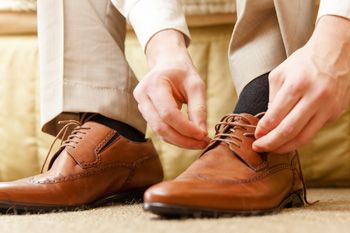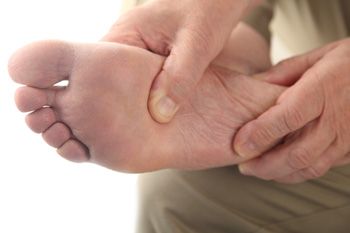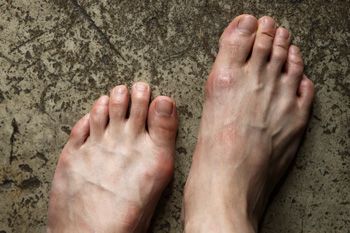Use a Proper Footwear
Reduce Foot Problems
Children’s Shoes - When a child begins to walk, shoes generally are not necessary, allowing an infant to go barefooted in doors, or to wear only a pair of socks, helps the foot grow normally and develop its muscles and strength, as well as the grasping ability of toes. As children grow more active, and their feet develop, the need for shoes becomes apparent. It becomes necessary to change shoe sizes at a pace that frequently surprises and even dismays parents, to allow room for growth.
When purchasing shoes for children, remember these tips:
- Examine the shoe itself. It should have a firm heel counter (stiff material on either side of the heel), adequate cushioning of the insole, and a built-in arch. It should be flexible enough to bend where the foot bends at the ball of the foot, not in the middle of the shoe.
- The child’s foot should be sized while he or she is standing up with full weight-bearing.
- There should be about one-half inch of space (or a thumb’s width) between the tip of the toes and the end of the shoe. The child should be able to comfortably wiggle his or her toes in the shoe.
- Have the child walk around the store for more than just a few minutes wearing the shoe with a normal sock. Ask the child if he or she feels any pressure spots in the shoe. Feel the inside of the shoe for any staples or irregularities in the glue that could cause irritation. Examine where the inside stitching hits the foot. Look for signs of irritation on the foot after the shoe is worn.
- Shoes should not slip off at the heels. Children who tend to sprain their ankles will do better with high-top shoes or boots.
- Both feet should be measured, and if two different sizes, shoes should be chosen that fit the larger foot best.







